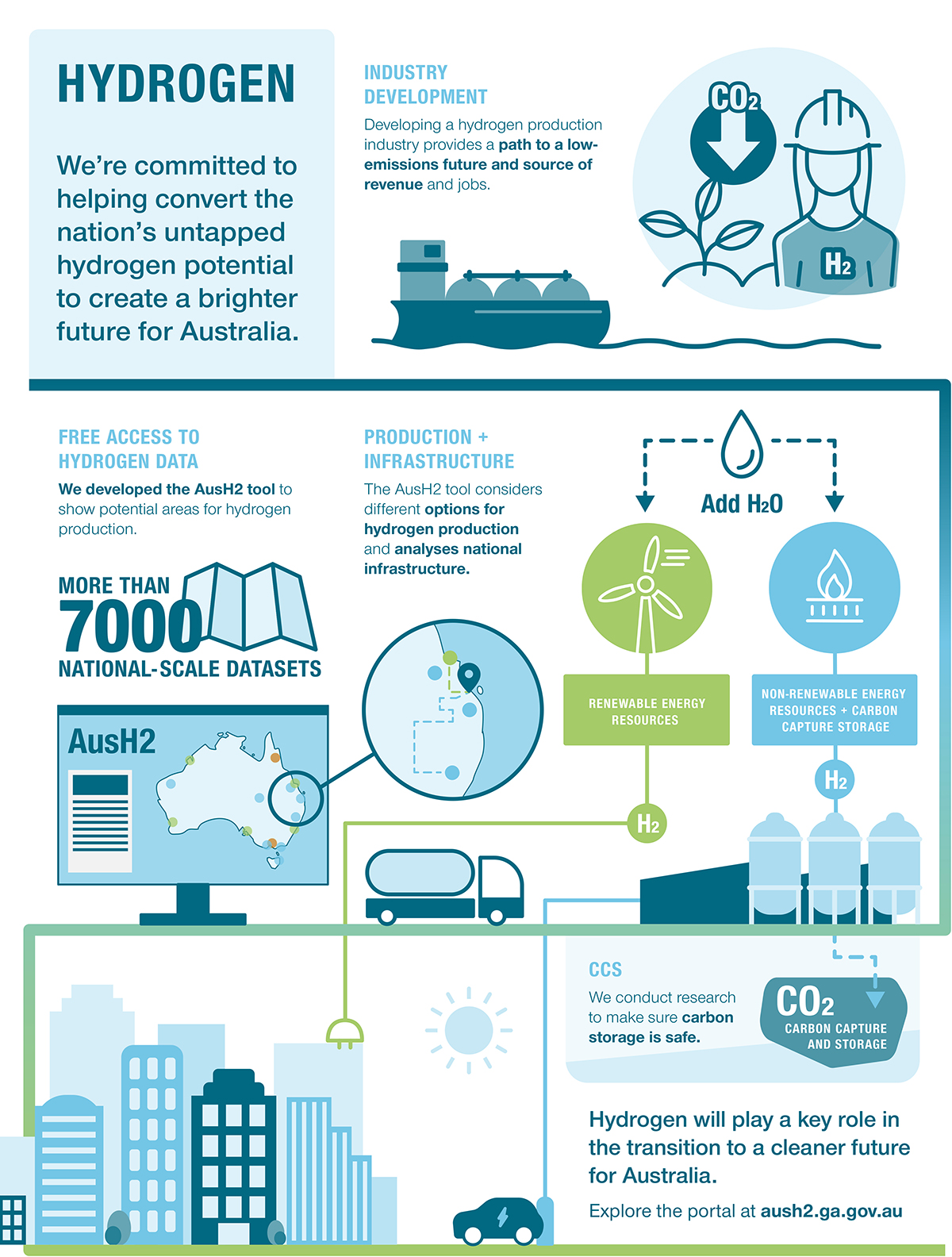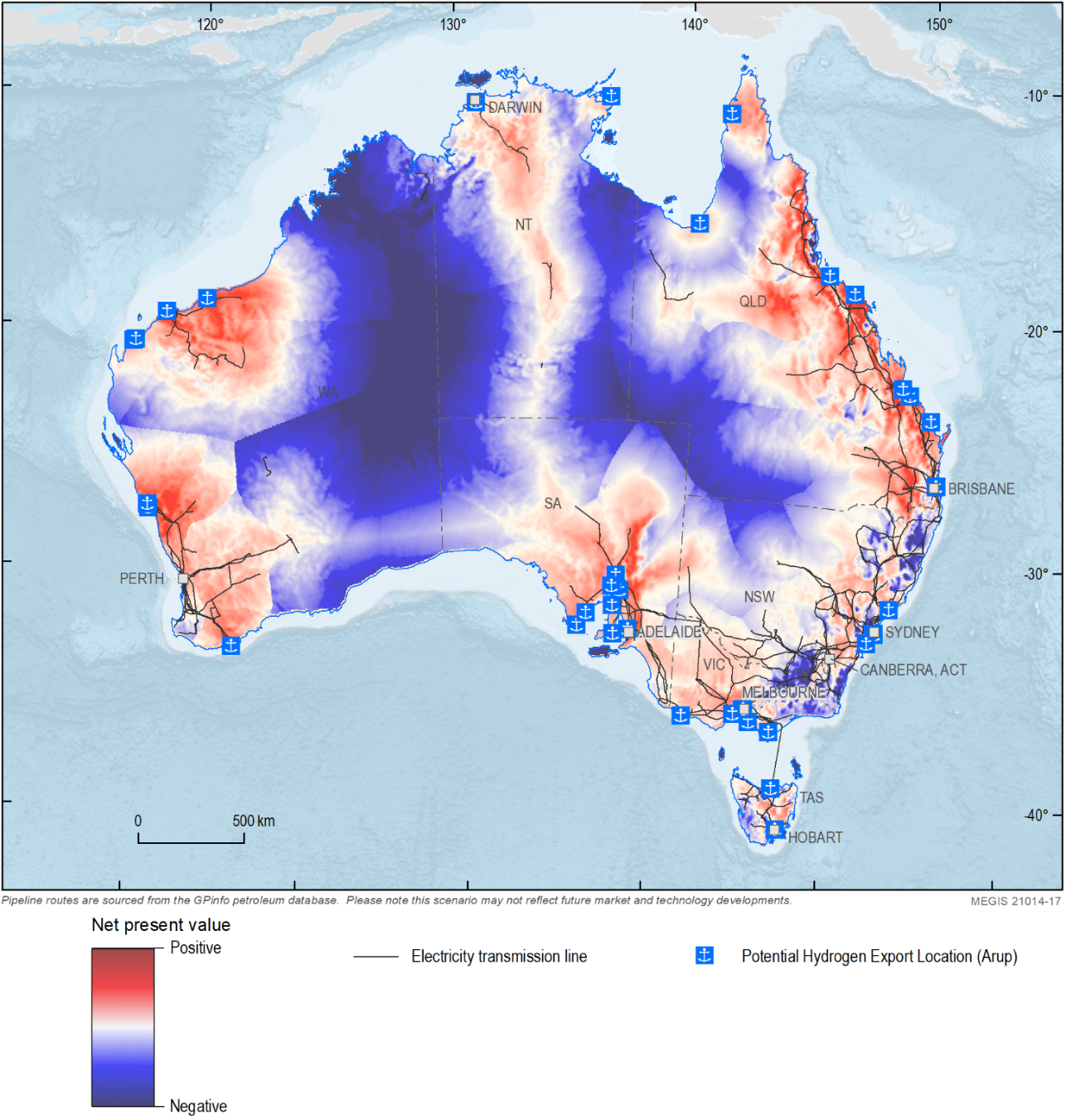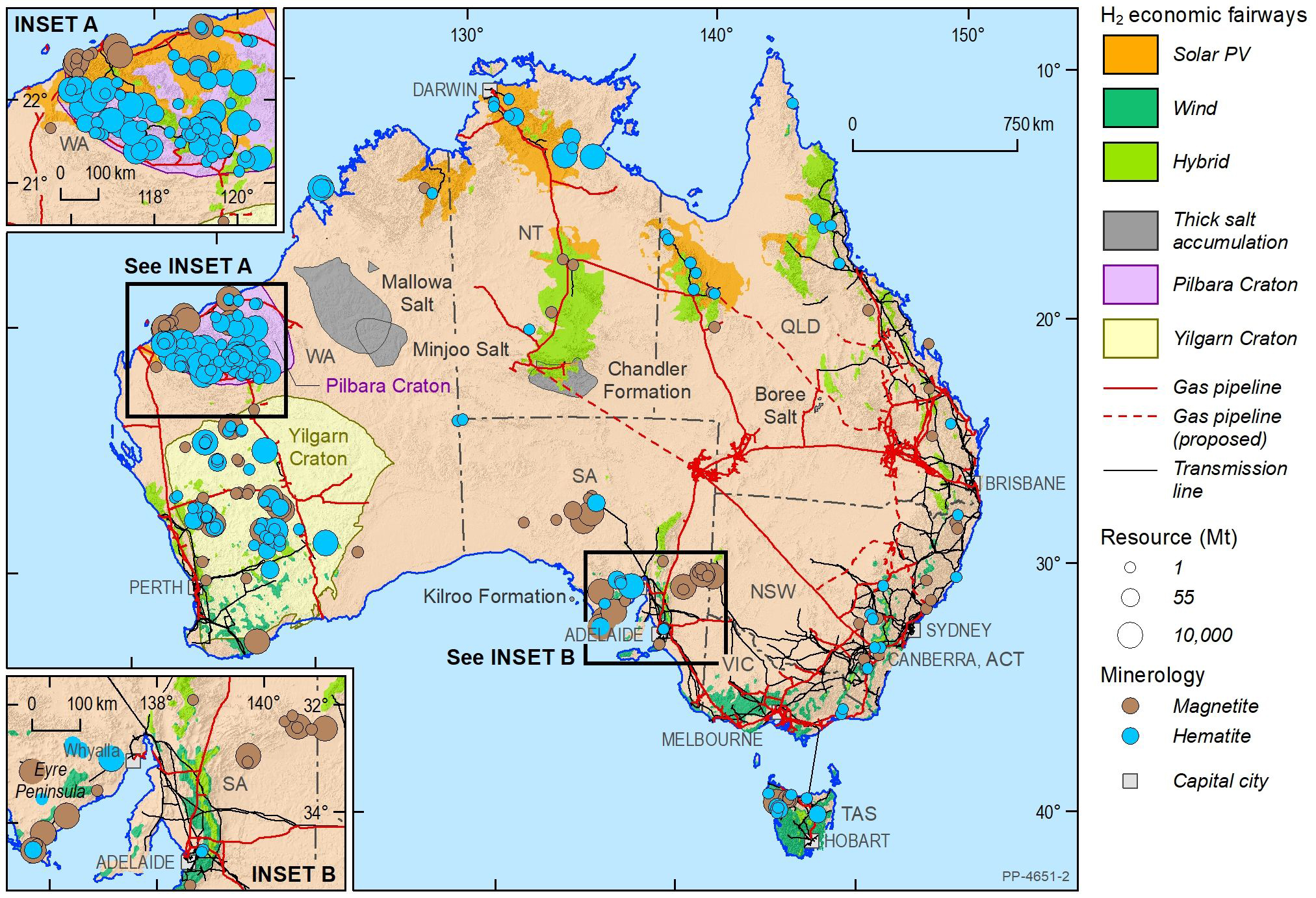Current projects
Page last updated:24 October 2023
Australia's future energy resources
Geoscience Australia is currently working on a continental-scale project that evaluates the potential for new energy commodities hosted within sedimentary basins, including oil, natural gas and hydrogen, to support Australia’s transition to a low carbon economy.
To stimulate the hydrogen industry, new geological storage sites are being investigated for hydrogen fuel storage, including salt accumulations. In addition, the utility of geothermal resources in deep-seated aquifers is being assessed for hydrogen production. Importantly, the economics of hydrogen from renewable energy, hydrogen from fossil fuels with carbon capture and storage, and natural sources of hydrogen are being assessed to inform investment and government policy.
Further information
Australia's Hydrogen Opportunities Tool
Geoscience Australia has developed the AusH2 data portal (AusH2.ga.gov.au) which provides open access to datasets and tools to assist governments and industry in assessing hydrogen potential in Australia. AusH2 provides access to over 7,000 national-scale datasets including infrastructure layers. Data can be viewed and overlayed with other layers in the portal or can be downloaded and viewed in the user’s own geospatial software.
Hydrogen Economic Fairways Tool
Geoscience Australia, in collaboration with Monash University, released an open-source economic model that maps the economic viability of hydrogen production opportunities across Australia – the Hydrogen Economic Fairways Tool (HEFT).
HEFT is designed to support the implementation of the National Hydrogen Strategy. It helps investors and policy-makers identify regions suitable for hydrogen production in Australia and make decisions about the location of new infrastructures, such as the development of hydrogen hubs.
The tool conducts a geospatial-financial analysis of future large-scale hydrogen projects. It assesses the quality of resources required to produce hydrogen, such as:
- Wind
- Solar PV
- Concentrated solar power
- Hybrid wind and solar
- Fossil fuels with carbon capture and storage
Rail and road transportation infrastructure, pipelines to export ports, and access to water (from water recycling and ocean desalination) are included in the analysis.
Preliminary results from HEFT show that economically viable regions for hydrogen production are located across Australia, with high potential regions found in all Australian States and Territories. The sample output below from HEFT shows the favourable locations (in red) of potential hydrogen hubs using off-grid hybrid wind and solar.
- Access to the Hydrogen Economic Fairways Tool
- Supporting technical paper Evaluating the economic fairways for hydrogen production in Australia
- Underlying BlueCap python code (open access)
Predicted regional net present value for a large-scale hybrid wind and solar PV powered hydrogen plant. This map is based on a 50:50 split of offgrid wind and solar energy and a capital price of US$600/kW for the electrolysers. Water is assumed to be sourced from recycled domestic wastewater or from seawater desalination. Red areas indicate where this could be done profitably at a target hydrogen price of $3.60/kg.
Mapping of salt resources for underground storage for hydrogen
Geoscience Australia is exploring suitable underground salt accumulations for underground hydrogen storage, both for domestic use and export, as described in the “Australian salt basins-options for underground hydrogen storage” journal article. The project aims to support scaling up of the Australian hydrogen industry through understanding underground hydrogen storage resources in key locations across Australia.
Geoscience Australia is mapping the nationwide distribution of thick salt accumulations in salt-bearing sedimentary sequences, including Carribuddy Group salt in the Canning Basin, Boree Salt in the Adavale Basin, Kilroo Formation in the Polda Basin and Browne Formation in the Officer Basin. In addition, new remote sensing salt prospecting techniques will be developed and tested.
This project will result in a new dataset of salt accumulations potentially suitable for underground hydrogen storage. The salt accumulations may also be suitable for compressed air storage.
These products will assist governments and investors with future hydrogen strategies and infrastructure planning.
Further information
- Adavale Basin 3D Geological Model – Petrel Dataset
- Canning Basin AusAEM interpretation: hydrogen storage potential and multilayered mapping
- Evaluating the economic potential for geological hydrogen storage in Australia
- Feasibility of underground hydrogen storage in a salt cavern in the offshore Polda Basin
- Feasibility of underground hydrogen storage in a salt cavern in the Adavale Basin
- Integrated geophysical modelling for salt mapping in the Polda Basin, South Australia
- Preliminary 3D model of the Boree Salt in the Adavale Basin, Queensland
Opportunity and challenges for Australian green steel
Technology-driven decarbonisation of heavy industry (i.e., steel production) can help maximise export opportunities beyond iron ore and can build resilience in Australia’s major international supply chains. Advances in “green” steel production can also support establishing a commercial hydrogen industry.
Geoscience Australia, in collaboration with Monash University is developing an open-source Green Steel Economic Fairways mapper, which utilises geoscience knowledge and data to highlight regional opportunities of high economic potential for hydrogen and green steel industries in Australia.
Locations of Australian iron ore resources by mineralogy. Coloured polygons highlight high-potential regions for the production of off-grid hydrogen from solar, wind or hybrid (i.e. equal wind and solar) sources.


